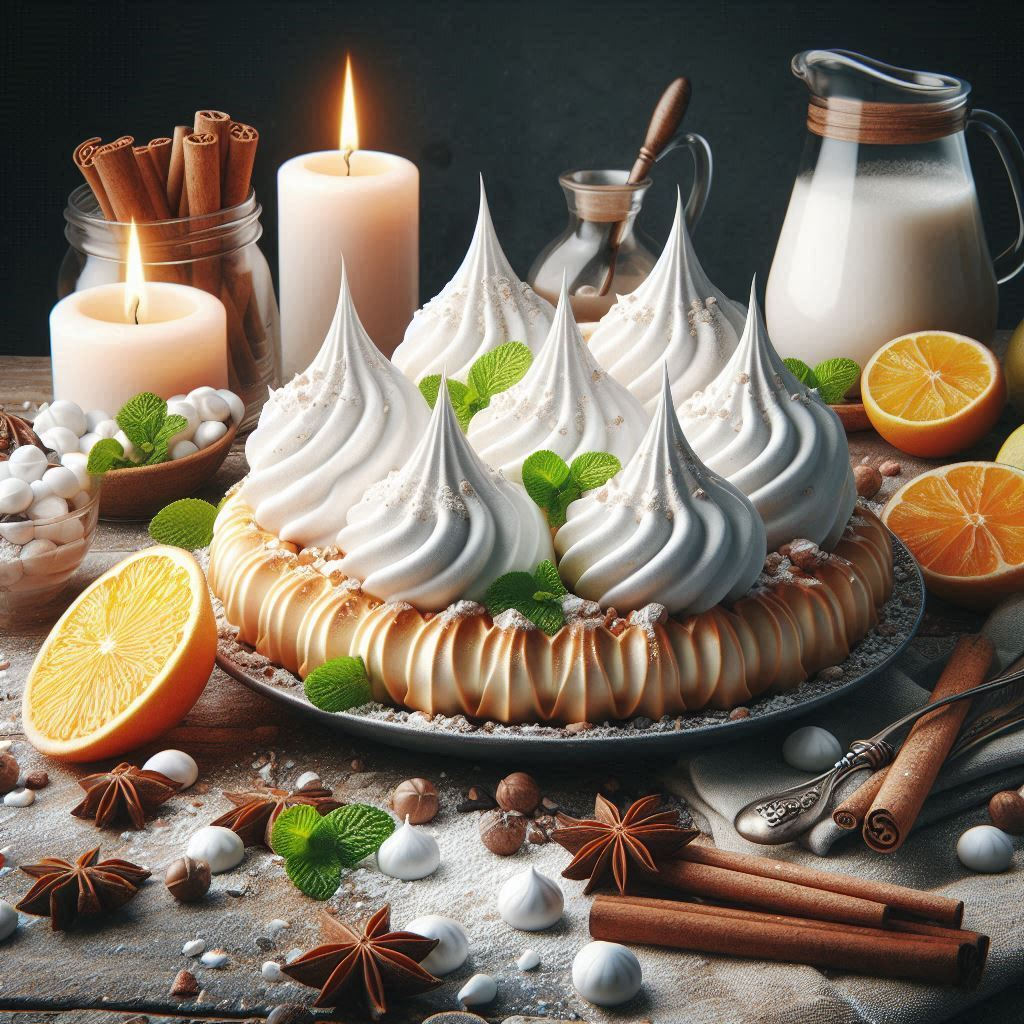
Meringue: A Sweet and Airy Culinary Delight
Origins and History
Meringue, a beloved dessert enjoyed worldwide, traces its roots back to the 17th century in Switzerland. The precise origin of its name remains a subject of debate, with some attributing it to the Swiss town of Meiringen, while others suggest it derives from the French word “meringue,” meaning “to kiss.”
Early meringue recipes, dating back to the 1600s, called for whipped egg whites sweetened with honey or sugar. These simple concoctions were often used as a filling for pastries or as a topping for pies.
Ingredients and Preparation
At its core, meringue is a mixture of egg whites, sugar, and an acid, such as cream of tartar or lemon juice. The acid helps stabilize the egg whites, allowing them to reach their full potential for volume and airiness.
The preparation of meringue involves several key steps:
- Separating the eggs: Carefully separate the egg whites from the yolks, ensuring no trace of yolk remains in the whites.
- Whipping the egg whites: Using an electric mixer or a whisk, whip the egg whites until they form stiff peaks. This process incorporates air into the whites, creating the meringue’s signature lightness.
- Adding the sugar: Gradually add sugar to the whipped egg whites while continuing to whip. The sugar helps stabilize the meringue and provides sweetness.
- Flavoring (optional): At this stage, you can add flavorings such as vanilla extract, almond extract, or citrus zest to enhance the meringue’s taste.
Types of Meringue
There are three main types of meringue, each with its unique texture and uses:
- French meringue: Made with just egg whites and sugar, French meringue is the most basic and versatile type. It is often used as a topping for pies and tarts or as a filling for éclairs and profiteroles.
- Swiss meringue: In Swiss meringue, the egg whites and sugar are whisked together over simmering water until they reach a thick and glossy consistency. This type of meringue is more stable and less prone to weeping than French meringue. It is often used for making macarons and meringues.
- Italian meringue: Italian meringue is made by pouring hot sugar syrup into whipped egg whites. This creates a very stable and glossy meringue that is often used for decorating cakes and pastries.
Baking and Uses
Meringue can be baked or cooked in various ways:
- Baking: Meringues can be baked in the oven at a low temperature until they are dry and crisp. This creates the classic meringue cookies or meringues.
- Torching: Using a kitchen torch, you can caramelize the surface of meringue, creating a golden-brown and slightly crispy exterior. This technique is often used for finishing off meringue desserts such as pavlovas.
- Poaching: Meringue can be poached in simmering water or milk to create delicate and airy dumplings. These dumplings can be served as a dessert on their own or used in other dishes.
Meringue’s versatility extends beyond desserts. It can be used as a topping for fruit salads, as a filling for cream puffs, or even as a savory ingredient in dishes such as meringues salés (savory meringues).
Tips for Success
- Use the freshest eggs possible for the best results.
- Make sure the bowl and beaters are completely clean and free of any grease.
- Whip the egg whites until they form stiff peaks. This will ensure a stable meringue.
- Add the sugar gradually while continuing to whip. This will help prevent the meringue from deflating.
- Bake the meringue at a low temperature to prevent it from browning too quickly.
With careful preparation and a touch of patience, you can create delicious and visually stunning meringue desserts that will impress your family and friends.



